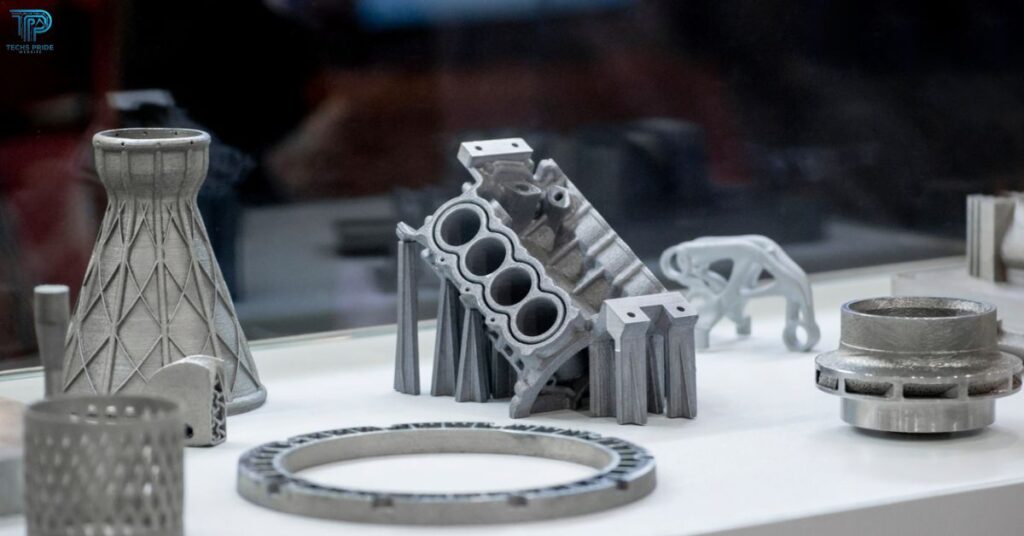The impact of 3D printing on manufacturing and product creation is nothing short of revolutionary. This disruptive technology has fundamentally altered traditional manufacturing processes by offering unparalleled flexibility speed and cost-effectiveness.
3D printing companies can produce prototypes customized products and even small batches with minimal lead times eliminating the need for expensive tooling and reducing waste.
Beyond just streamlining production 3D printing enables the creation of intricate geometries and complex designs that were previously unattainable opening up a world of possibilities for designers engineers and manufacturers alike.
Origins of 3D Printing Technology
The concept of 3D printing dates back to the 1980s when Chuck Hull an engineer invented stereolithography (SLA) technology. This technology utilized photopolymerization to create three-dimensional objects layer by layer. It was a breakthrough in manufacturing, enabling rapid prototyping and iteration of designs.
Advancements in 3D Printing Technology
Over the years 3D printing has evolved significantly driven by advancements in materials science software development and hardware innovations. Some key advancements include:
- Material Diversity: Initially limited to plastics 3D printing now encompasses a vast range of materials including metals ceramics, composites and even biological materials.
- Speed and Precision: Improvements in printing techniques and hardware have led to faster printing speeds and higher resolution allowing for more complex and detailed objects to be printed.
- Multi-material Printing: Modern 3D printers can print with multiple materials simultaneously enabling the creation of objects with unique properties and functionalities.
- Large-Scale Printing: While early 3D printers were limited in size newer technologies allow for the printing of large-scale objects opening up possibilities in construction, aerospace and other industries.
- Bioprinting: Bioprinting has emerged as a promising field allowing for the printing of living tissues and organs using bioinks composed of living cells.
- Software Advances: Sophisticated software tools have been developed to streamline the design and printing process making it more accessible to a wider range of users
Current State of 3D Printing

3D printing has become a mature and widely adopted technology across various industries including aerospace, automotive, healthcare and consumer goods. Some key aspects of the current state of 3D printing include:
Like This Post:MT10 Price in India 2024, Launch Date
Industrial Applications
3D printing is extensively used in prototyping tooling and manufacturing of end-use parts in industries such as aerospace and automotive where customization and rapid production are critical.
Consumer Adoption
3D printers have become more affordable and user-friendly leading to increased adoption among hobbyists makers and small businesses.
Medical Applications
In the healthcare sector 3D printing is used for creating patient-specific implants, prosthetics, surgical guides and even for bioprinting tissues and organs for research and transplantation.
Sustainability
3D printing has the potential to reduce waste by using only the materials necessary for production and enabling on-demand manufacturing thereby minimizing excess inventory and transportation emissions.
Challenges
Despite its advancements challenges such as material limitations print quality issues and intellectual property concerns still exist and continue to be areas of active research and development.
Applications of 3D Printing in Manufacturing

Prototyping and Designing
- Rapid Iteration: 3D printing enables manufacturers to quickly iterate and refine designs reducing time-to-market for new products.
- Cost-effective Prototyping: Traditional prototyping methods can be expensive and time-consuming while 3D printing offers a more affordable and efficient alternative.
Customization and Personalization
- Tailored Products: 3D printing allows for the production of customized products tailored to individual customer needs and preferences.
- Mass Customization: Manufacturers can efficiently produce a wide range of customized products without the need for specialized tooling or assembly lines.
Tooling and Manufacturing Aids
- Jigs and Fixtures: 3D printing is used to create custom jigs, fixtures and assembly aids that improve efficiency and accuracy in manufacturing processes.
- Spare Parts Production: Manufacturers can produce spare parts on-demand, reducing downtime and inventory costs.
Small Batch Production
- Economical Small Runs: Traditional manufacturing methods are often cost-prohibitive for small production runs, while 3D printing enables economical production of small batches.
- Reduced Setup Costs: 3D printing eliminates the need for expensive molds or tooling, making it viable for small-scale production.
Impact of 3D Printing on Manufacturing Processes
Reduction in Lead Time
- Faster Production: 3D printing enables rapid prototyping and on-demand manufacturing, reducing lead times from design to production.
- Streamlined Supply Chain: By enabling localized production 3D printing minimizes the time and cost associated with shipping and logistics.
Cost Savings
- Elimination of Tooling Costs: Traditional manufacturing methods require expensive molds and tooling which can be eliminated with 3D printing.
- Reduced Waste: 3D printing produces minimal waste compared to subtractive manufacturing processes leading to cost savings in material usage.
Complex Geometries and Design Freedom

- Design Optimization: 3D printing allows for the creation of complex geometries and intricate designs that are difficult or impossible to achieve with traditional methods.
- Lightweight Structures: Manufacturers can optimize designs for weight reduction and material efficiency leading to cost savings and performance improvements.
On-Demand Manufacturing
- Inventory Reduction: With on-demand manufacturing, companies can reduce inventory levels and minimize the risk of overstocking or obsolescence.
- Customization Flexibility: On-demand production enables manufacturers to respond quickly to changing customer demands and market trends.
Environmental Considerations of 3D Printing
Material Efficiency and Waste Reduction
- Minimal Material Waste: 3D printing produces parts with minimal material waste compared to traditional subtractive manufacturing methods.
- Recycling Opportunities: Some 3D printing materials can be recycled, further reducing environmental impact.
Localized Manufacturing and Distribution
- Reduced Transportation: Localized 3D printing facilities can reduce the need for long-distance transportation of goods, lowering carbon emissions and energy consumption.
- Just-in-Time Production: Localized manufacturing enables just-in-time production, reducing the need for large warehouses and excess inventory.
Sustainable Materials and Recycling
- Bio-based and Recycled Materials: Manufacturers are exploring the use of sustainable and recycled materials for 3D printing reducing reliance on virgin plastics and other non-renewable resources.
- Closed-Loop Systems: Some 3D printing processes enable closed-loop recycling systems, where waste material is collected recycled and reused in the printing process further minimizing environmental impact.
Frequently Asked Question
How does 3D printing impact traditional manufacturing processes and product creation?
This question delves into the overall transformation that 3D printing brings to traditional manufacturing methods and how it influences the creation of products considering aspects like design production efficiency and customization.
What specific advantages does 3D printing offer in terms of manufacturing and product creation compared to conventional methods?
Here, the focus is on identifying the unique benefits of 3D printing such as rapid prototyping, customization capabilities, reduced tooling costs and design freedom, among others.
What challenges or limitations does 3D printing pose in manufacturing and product development?
This question explores potential hurdles or drawbacks associated with 3D printing including material limitations, print quality issues, intellectual property concerns and scalability challenges.
How does the adoption of 3D printing affect supply chain management and distribution strategies in manufacturing industries?
This inquiry investigates the broader implications of 3D printing adoption on supply chain dynamics, including considerations like inventory management, on-demand production and localized manufacturing.
What environmental impacts does 3D printing have on manufacturing processes and product life cycles?
This question focuses on the sustainability aspects of 3D printing, such as material efficiency, waste reduction, energy consumption and the potential for eco-friendly materials and recycling initiatives.
Conclusion
In conclusion, the impact of 3D printing on manufacturing and product creation is profound and multifaceted. This transformative technology has revolutionized traditional manufacturing processes by offering unparalleled advantages in terms of design flexibility, production efficiency and customization capabilities.
By enabling rapid prototyping on-demand manufacturing and the creation of complex geometries, 3D printing has streamlined product development cycles and empowered businesses to respond swiftly to evolving market demands.

I’m a tech writer specializing in explaining complex software and hardware topics clearly. Passionate about making technology accessible through straightforward, engaging writing.







